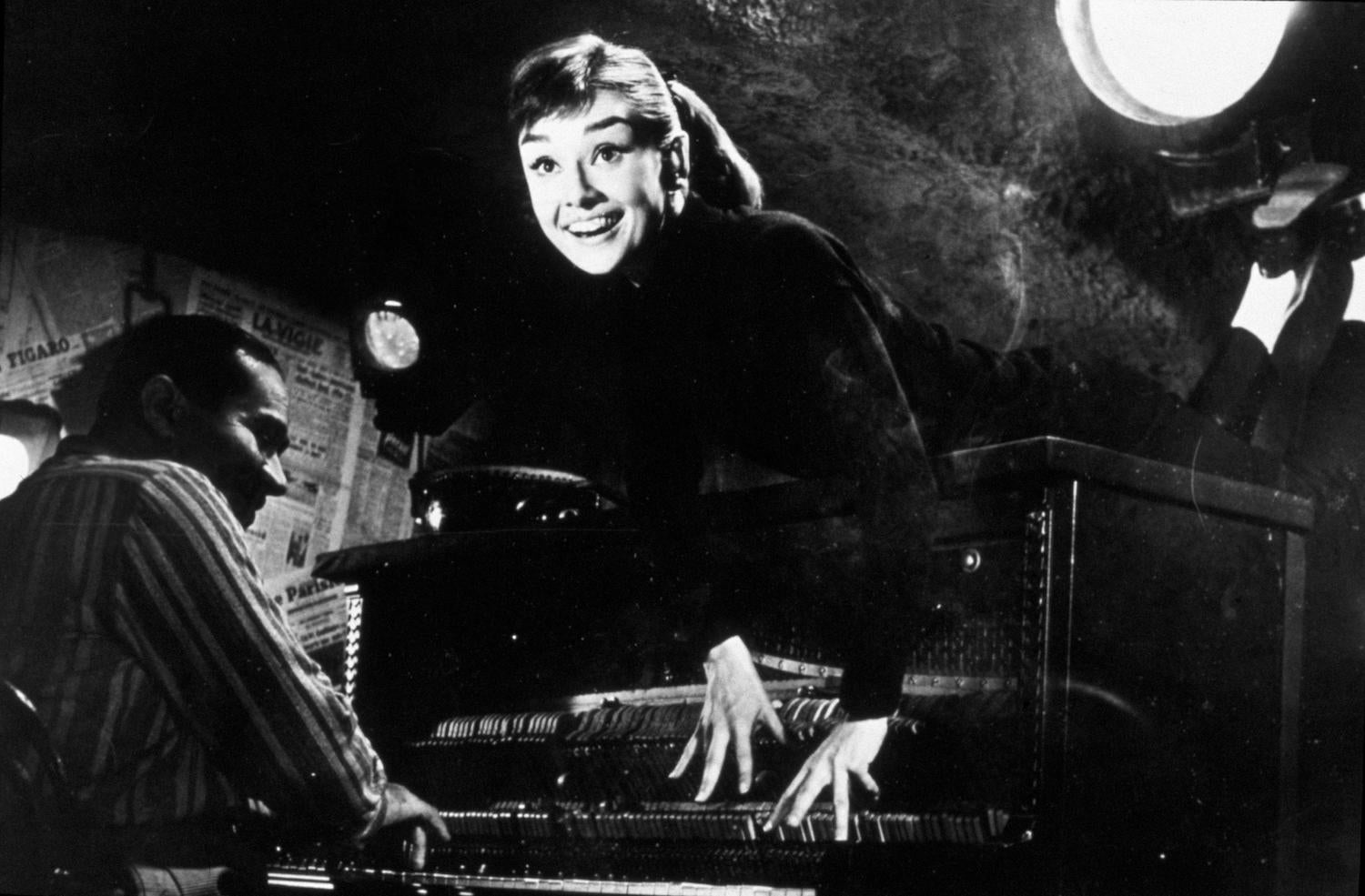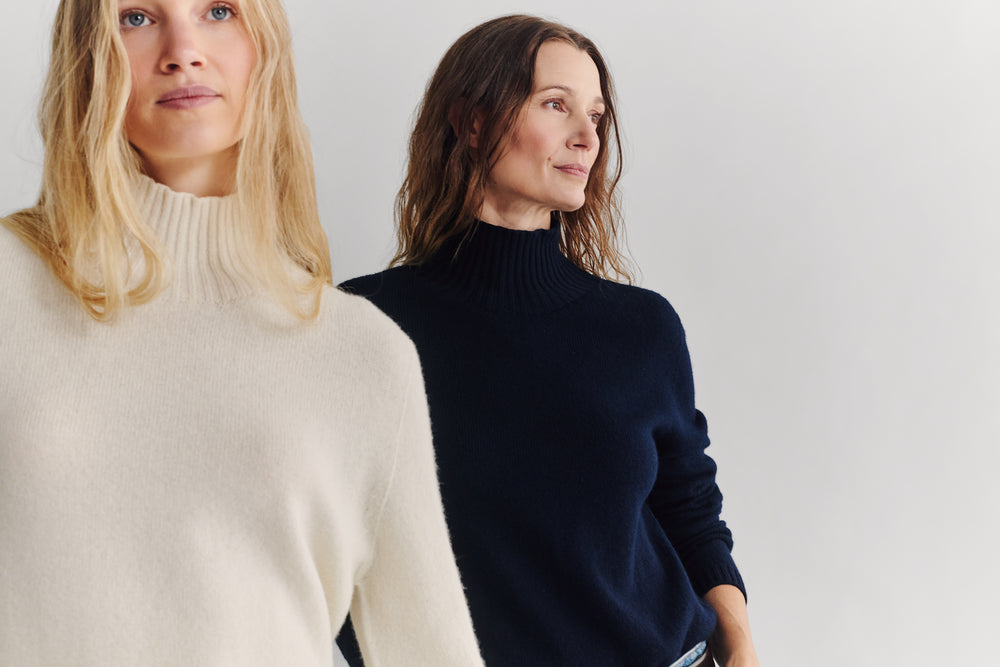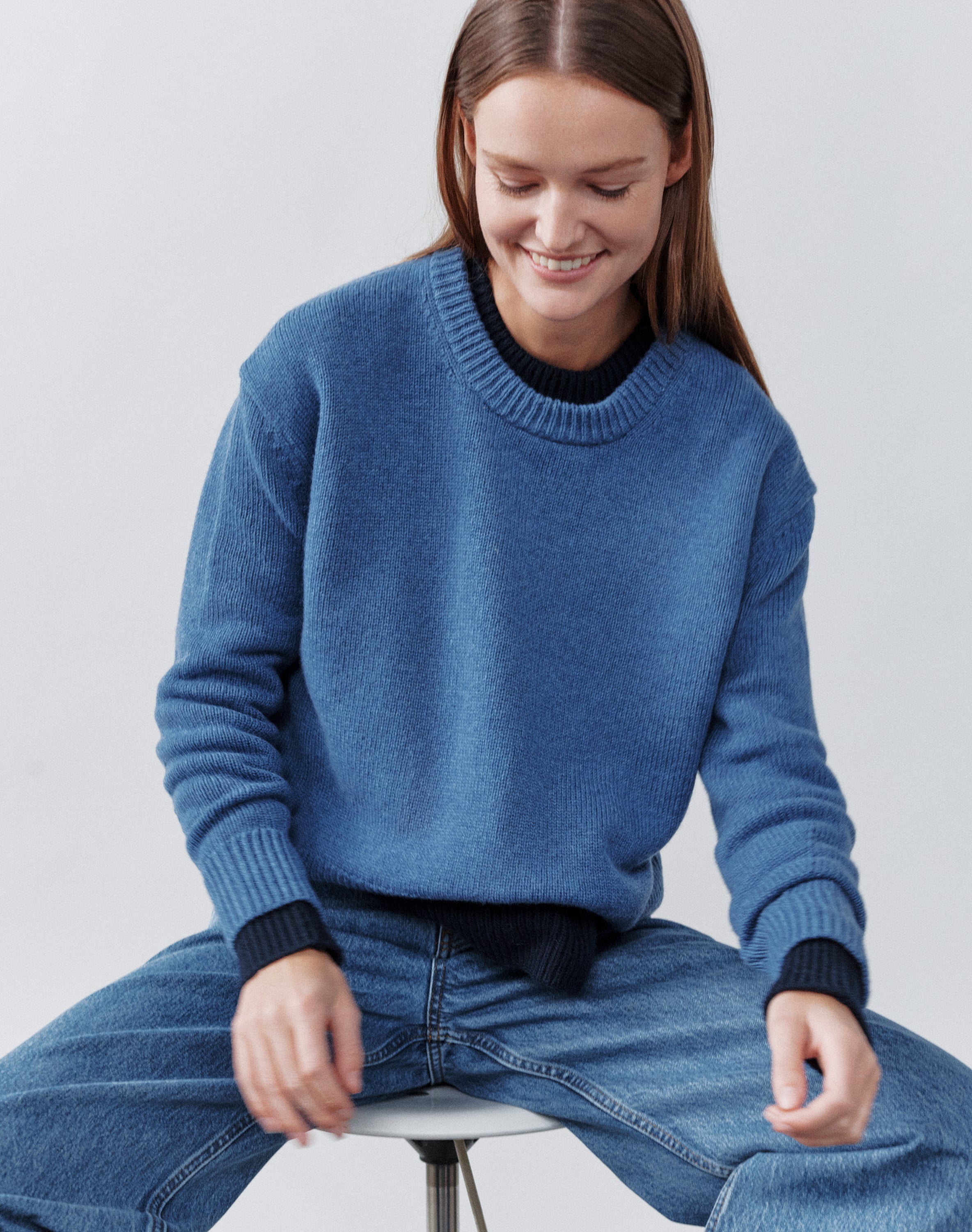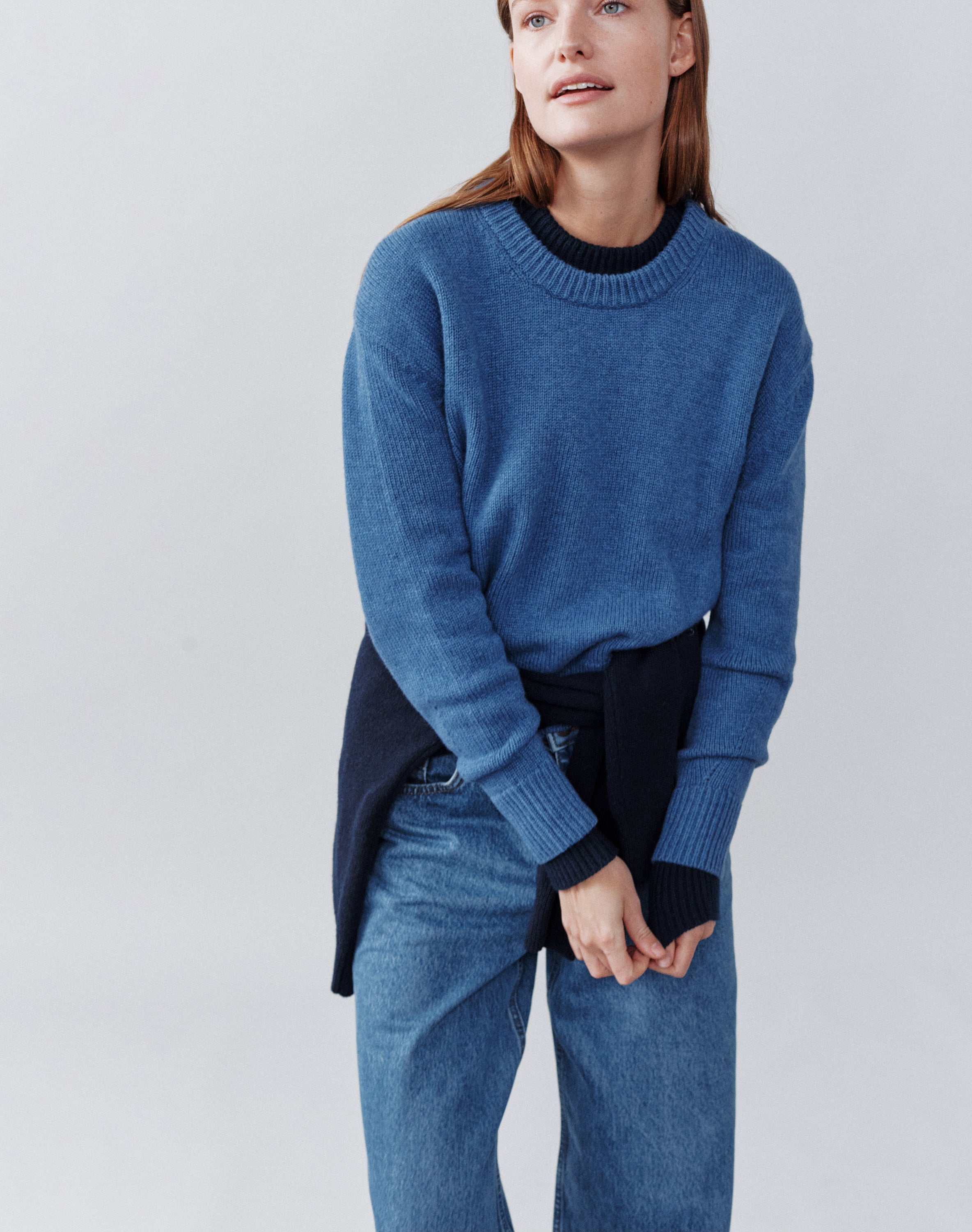The humble jumper. It's centuries old. In fact, the use of wool in textiles dates back as far as 3000 B.C. Very early on, people identified how clever wool was - naturally insulating, water-repellent and durable - excellent for keeping warm and staying dry.
It was in the 15th century that the first knitted shirts or tunics were formally produced on the Channel Islands of Guernsey and Jersey; hence the name "jersey' entered our vocabulary. These knitted garments were made by the wives of fishermen and sailors from natural wool, which, by retaining its natural oils, protected against the cold even when damp.

And so, for centuries, from fishermen in Ireland’s northern villages to shepherds in the highlands of the Middle East, the wool garment that resembles a modern sweater, became the the go-to practical textile.
A shift came in the 1890s when it was adopted by athletes in the United States and tweaked a little, to become what we now call a 'sweater'.

It wasn’t until the nineteen and twenties that fashion began to recognise it as something other than something that could keep you warm.
The sweater's first haute-couture label seems to be Lanvin's in 1926, although both Schiaparelli and Chanel have laid claim to being the true sweater sponsor.
Schiaparelli began her fashion career decorating what came to be known as the “dressmaker” sweater, while Chanel simply removed the plain sweater from the working classes and festooned it with piles of necklaces. In 1937, Chanel was wearing her little black sweater and jewellery with pants for dining at home. And some might argue, not much has changed.

During the thirties, here in the UK, women would layer a Shetland or cashmere cardigan over a matching jumper - after all our houses could be quite draughty. Women also began to add a single strand of pearls and started the “twin set” fad that went around the world and back again.

It was in 1935, that a 15‐year‐old girl in a tight sweater was discovered by a movie scout sitting on a soda fountain stool. Lana Turner, became known as the “sweater girl,” - she skyrocketed to fame, and the tight sweater remained the go-to trend until World War II.

From this point the pattern that jumper fashions have followed through the years is quite simply… narrow and neat for a while, then bulky and slouchy - from the baggy ‘Sloppy Joe’ jumper to Audrey Hepburn’s tight black polo-neck in Funny Face – and so on and so on.

“The 20th century's unique contribution to fashion,” is what Diana Vreeland, editor of Vogue magazine, calls the sweater and skirt.
We can’t argue with that.
+++
All archive imagery courtesy of Alamy.






